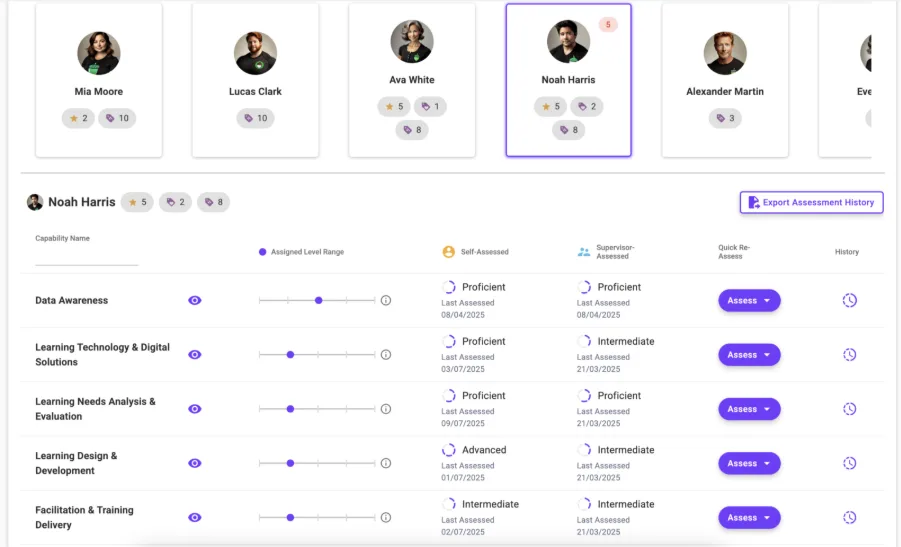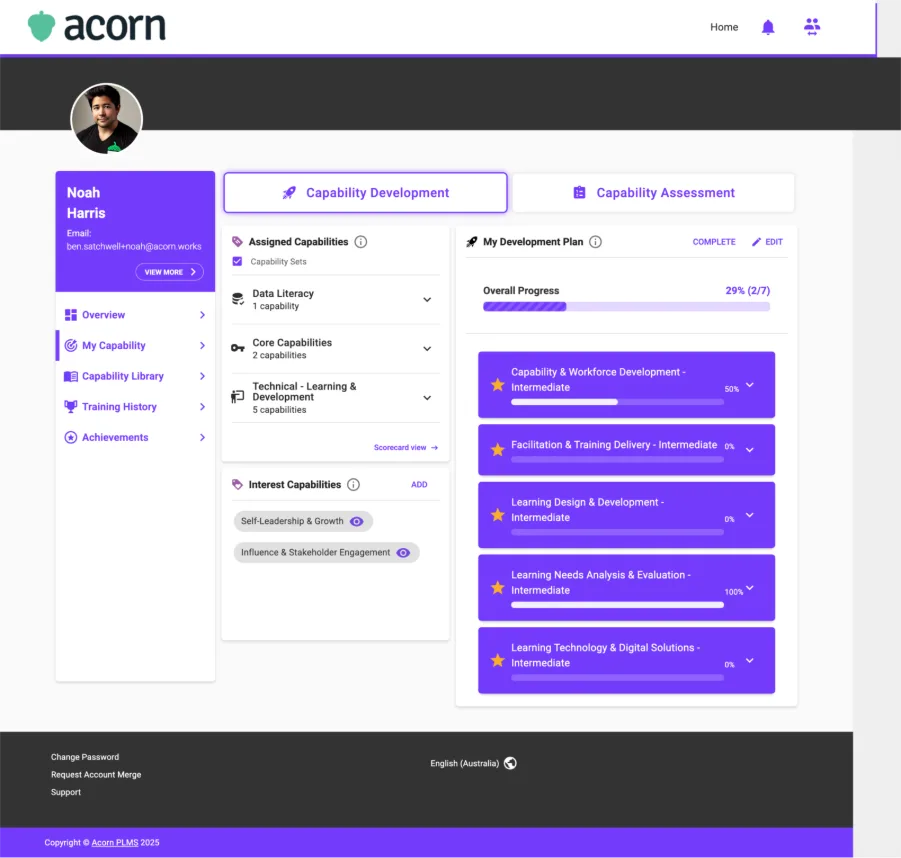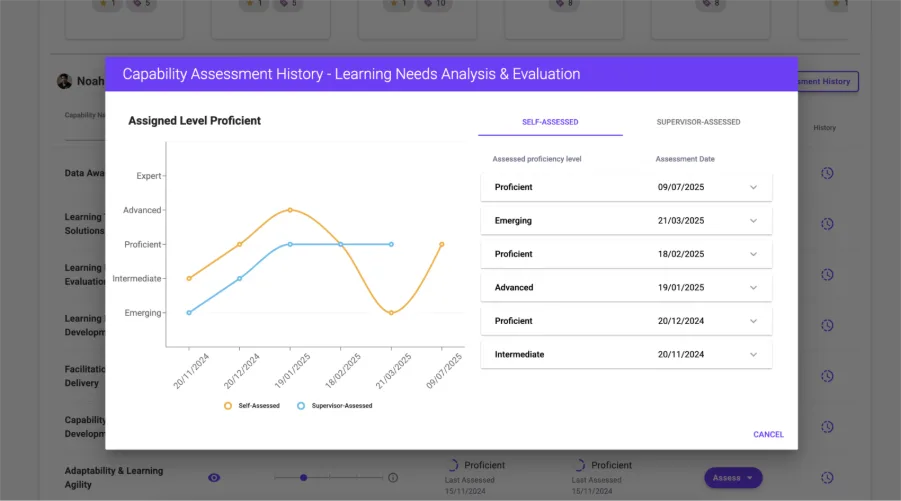The Manager’s Playbook: Leading Capability Conversations

Ben Satchwell
Head of Capabilities

Managers sit at the centre of any capability rollout.
The Acorn Capabilities module gives you the framework and the language, but it’s managers who turn that framework into real conversations that shape growth.
That can feel like a lot of responsibility. How do you explain capabilities without making staff defensive? How do you talk about proficiency levels without it sounding like a scorecard? And how do you use the framework to support, not criticize, your team?
This playbook is designed to give managers practical tools—not just theory—for leading capability conversations with confidence.
Why managers matter in capability adoption
When organizations launch capabilities, the biggest risk is that employees still hear the language of old evaluations: judgment, scoring, pass/fail. If that happens, trust erodes quickly.
Managers are the bridge. When they frame capabilities as growth tools and model supportive conversations, employees see the system as credible. When they don’t, employees dismiss it as “just another HR process.”
That’s why your role is pivotal. The way you talk about capabilities sets the tone for how your team will embrace them.
Common pitfalls to avoid
Before we dive into scripts, let’s be clear on what not to do.
- Don’t talk about “scoring” or “rating”; capabilities aren’t marks out of ten.
- Don’t make it about comparison. This is about personal growth, not competition.
- Don’t leave it vague. Clarity builds trust, ambiguity fuels anxiety.
- Don’t wait for annual reviews. Capability conversations should be continuous.
With those traps in mind, here’s how to approach capability conversations in practice.
Script 1: Introducing capabilities to your team
You don’t need to overcomplicate it. Keep the focus on growth and clarity.
Try this:
“From now on, we’ll be using capabilities to guide our development conversations. What that means is you’ll have a clear roadmap of what each skill looks like at different levels. This isn’t about judging your performance; it’s about giving you clarity on where you are today and what growth looks like for you tomorrow.”
That sets the tone: supportive, transparent, and future-focused.
Script 2: Talking through a capability assessment
When reviewing capability results with an employee, focus on where they are now and how to move forward.
Try this:
“You’ve assessed yourself at Developing in Stakeholder Engagement, and I’ve put you at the same level. That means you’re building confidence in managing relationships, and the next step is demonstrating you can influence outcomes more consistently. Let’s look at opportunities in your current projects to practice that.”
Notice the shift: it’s not “You’re weak here,” but “Here’s where you are and here’s how to grow.”
Here’s where the people leader can see this information in Acorn.

Script 3: Setting development goals
Goals become much more tangible when they’re linked to proficiency levels.
Try this:
“One of your goals this quarter could be to move from Proficient to Advanced in Data Analysis. The descriptors show that at Advanced, you should be able to draw insights that influence strategic decisions. Let’s find a project where you can present analysis to leadership and get that experience.”
This way, goals feel achievable and directly tied to the framework.
Here’s where the team member can update their development plan to incorporate your feedback in Acorn.

Script 4: Handling defensiveness
Even with the best intentions, some employees will feel anxious or defensive. The key is to acknowledge their feelings while bringing the focus back to growth.
Try this:
“I can see this feels confronting, and that’s understandable; change often does. But this isn’t about judging your past performance. It’s about creating a shared language so we can talk clearly about your growth. Let’s focus on what the next step looks like for you.”
Reassurance matters. You’re reminding them that the system is designed to support, not punish.
Script 5: Reinforcing progress
Recognition is just as important as identifying development needs. Use the framework to highlight growth.
Try this:
“Last quarter, you were at Developing in Negotiation, and now you’re clearly demonstrating the behaviours at Proficient. That’s great progress. Let’s talk about what you need to feel confident moving towards Advanced.”
By anchoring praise in the capability framework, you make recognition more concrete and motivating.

Making it work with Acorn
The Acorn Capabilities module makes these conversations practical.
The system also links capability assessments to development opportunities, so you’re not left asking “what next?” Once you’ve had the conversation, you can connect your team member to the right learning, projects, or pathways to support their growth.
This combination—clarity on expectations, guidance on growth, and concrete development opportunities—is what makes capability conversations stick.
Key takeaways
As a manager, your role in leading capability conversations is to:
- Introduce capabilities as a roadmap for growth, not a rating system
- Use the language of proficiency levels to bring clarity to development discussions
- Set goals that are tied directly to capability progression
- Handle defensiveness with reassurance and a focus on growth
- Reinforce progress to keep motivation high.
Acorn’s Capabilities gives you the framework. Your role is to make it real for your people.
With clear, supportive conversations, you turn capabilities from a system into a culture. One that drives development and performance every day.